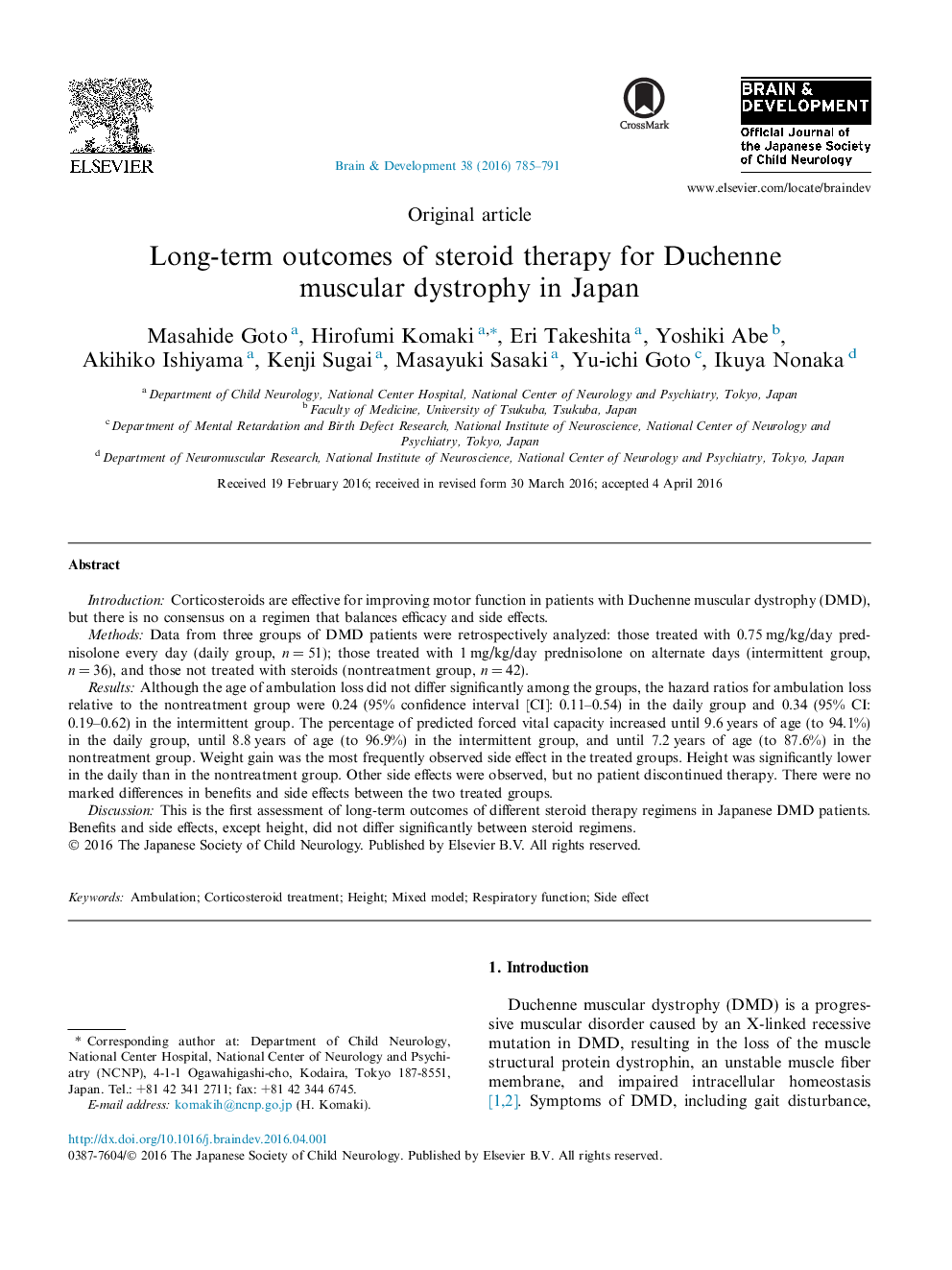| Article ID | Journal | Published Year | Pages | File Type |
|---|---|---|---|---|
| 3036421 | Brain and Development | 2016 | 7 Pages |
IntroductionCorticosteroids are effective for improving motor function in patients with Duchenne muscular dystrophy (DMD), but there is no consensus on a regimen that balances efficacy and side effects.MethodsData from three groups of DMD patients were retrospectively analyzed: those treated with 0.75 mg/kg/day prednisolone every day (daily group, n = 51); those treated with 1 mg/kg/day prednisolone on alternate days (intermittent group, n = 36), and those not treated with steroids (nontreatment group, n = 42).ResultsAlthough the age of ambulation loss did not differ significantly among the groups, the hazard ratios for ambulation loss relative to the nontreatment group were 0.24 (95% confidence interval [CI]: 0.11–0.54) in the daily group and 0.34 (95% CI: 0.19–0.62) in the intermittent group. The percentage of predicted forced vital capacity increased until 9.6 years of age (to 94.1%) in the daily group, until 8.8 years of age (to 96.9%) in the intermittent group, and until 7.2 years of age (to 87.6%) in the nontreatment group. Weight gain was the most frequently observed side effect in the treated groups. Height was significantly lower in the daily than in the nontreatment group. Other side effects were observed, but no patient discontinued therapy. There were no marked differences in benefits and side effects between the two treated groups.DiscussionThis is the first assessment of long-term outcomes of different steroid therapy regimens in Japanese DMD patients. Benefits and side effects, except height, did not differ significantly between steroid regimens.
